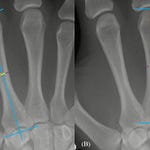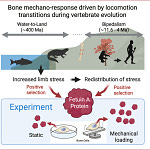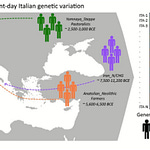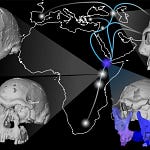Hominin brains, tweaked at the molecular level
More than half a million years ago, a quiet change took place in the chemistry of our ancestors' brains. Not a wholesale rewiring or a sudden expansion in skull size, but a slight nudge—a single swap of one amino acid in a metabolic enzyme called adenylosuccinate lyase, or ADSL. Today, that change sits in the cells of nearly every living human but is absent in our extinct cousins, the Neanderthals and Denisovans.
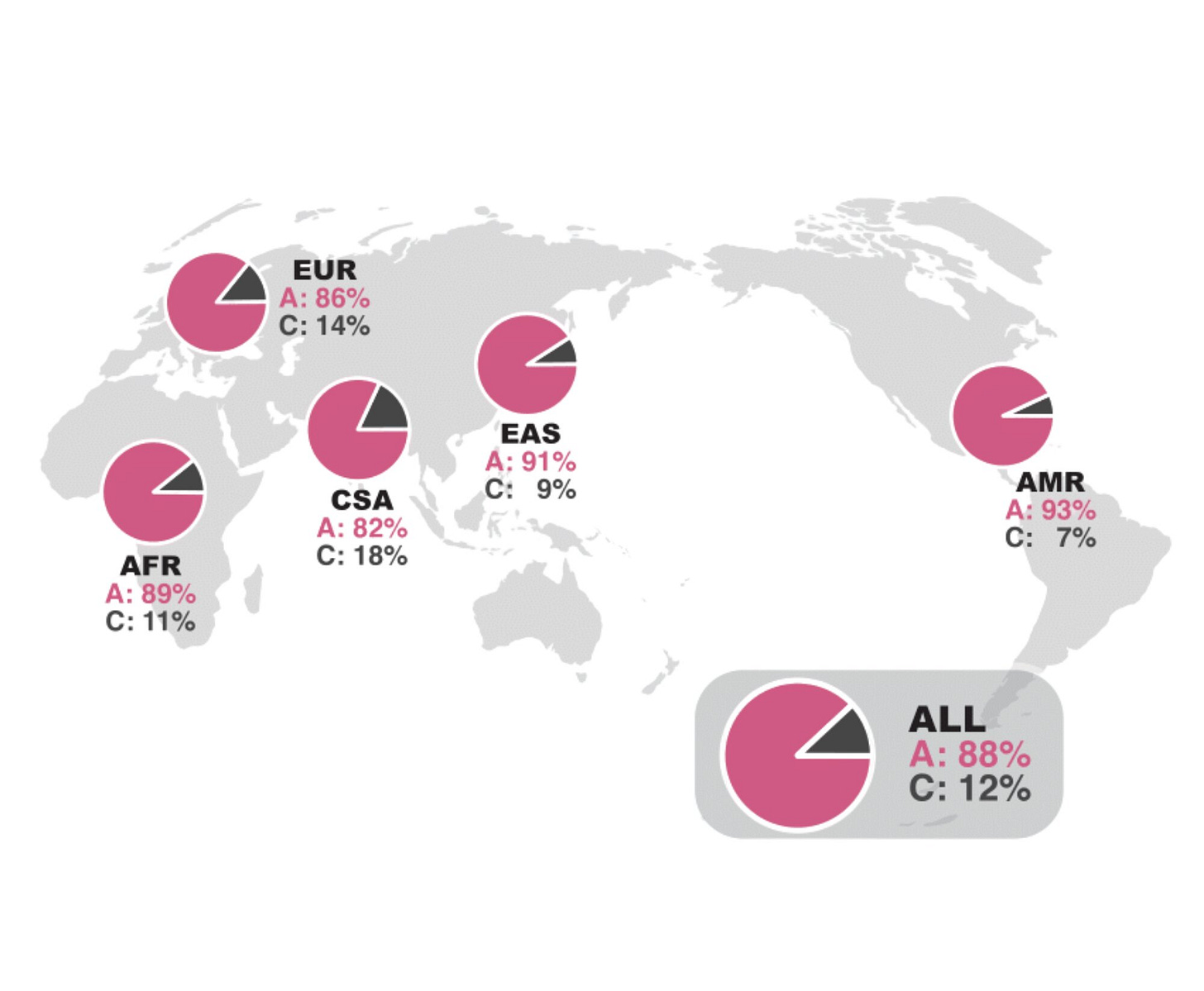
A new study published in PNAS1 by a collaborative team from the Okinawa Institute of Science and Technology (OIST) and the Max Planck Institute for Evolutionary Anthropology suggests that this tiny molecular substitution may have nudged our lineage in a new behavioral direction. At its heart is a question that cuts to the core of human evolution: how do the smallest molecular shifts ripple out to influence cognition, competition, and survival?
"This enzyme underwent two separate rounds of selection that reduced its activity—first through a change to the protein's stability and second by lowering its expression," explained Dr. Shin-Yu Lee, a geneticist at OIST.
"Evidently, there's an evolutionary pressure to lower the activity of the enzyme enough to provide the effects that we saw in mice, while keeping it active enough to avoid ADSL deficiency disorder."
An enzyme’s delicate balance
ADSL is a workhorse enzyme in the brain. It’s critical in the biosynthesis of purines—key building blocks for DNA, RNA, and molecules that help shuttle energy through cells. ADSL deficiency in humans leads to severe developmental delays, seizures, and cognitive impairments. Yet the modern human version of ADSL has been subtly disabled, not by disease, but by evolution.
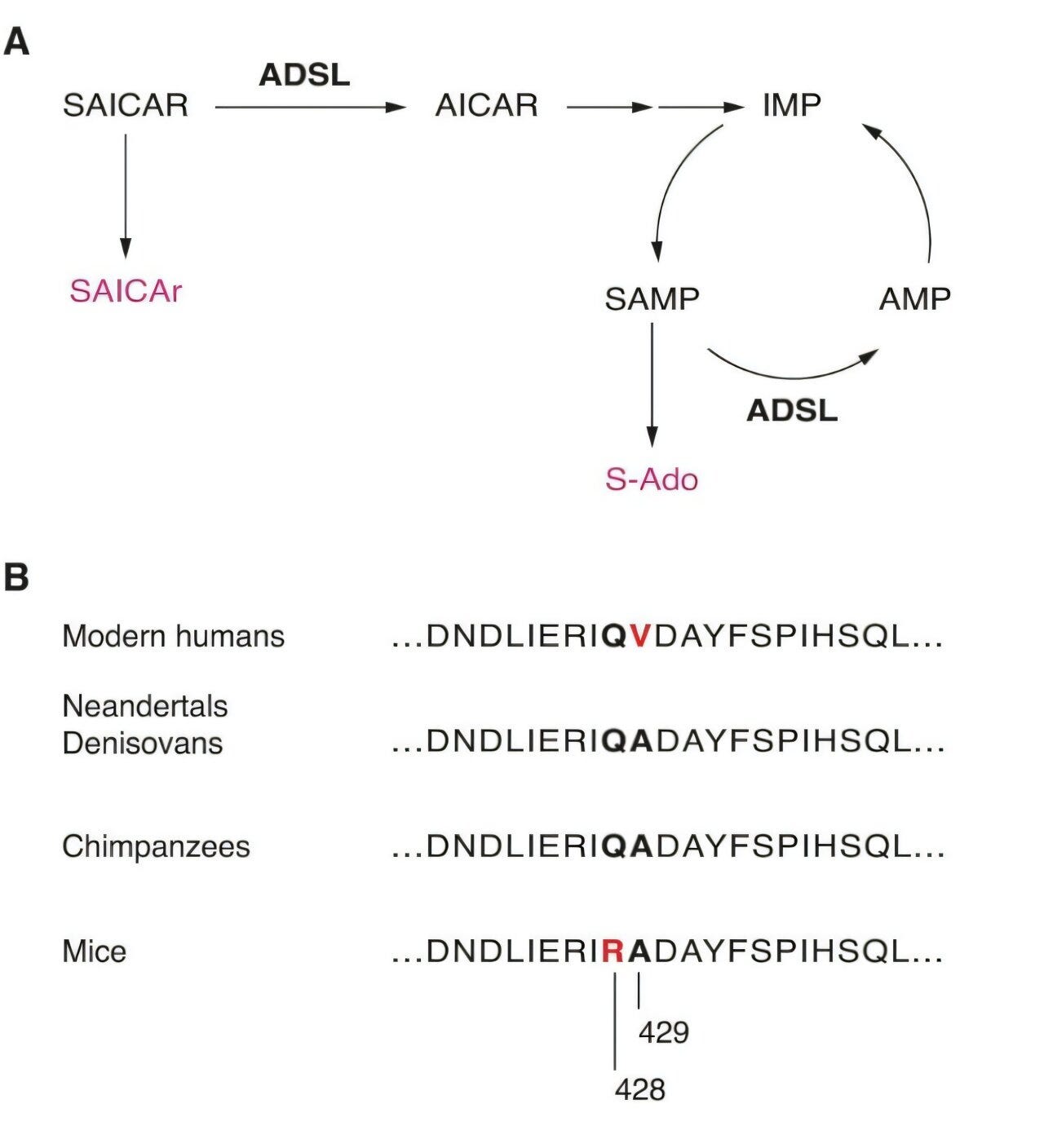
The authors found two distinct changes that reduced ADSL function. One is a substitution of valine for alanine at position 429 in the enzyme, a small tweak that makes the protein less stable. The second is a cluster of changes in a non-coding region of the gene, which reduces the amount of ADSL that gets made. The outcome? A measurable drop in ADSL activity in the brain.
Why this would be favored by natural selection remains an open question. But the answer may lie in how animals behave under competition.
A curious advantage in a thirsty mouse
To explore the behavioral effects of the modern human variant of ADSL, the researchers engineered mice to carry the valine mutation at position 429. When these mice were placed in a competitive test involving limited access to water, a curious pattern emerged. The female mice with the human-like ADSL variant were better at securing water than their littermates.
"Accessing water proficiently involves processing sensory information, learning which actions lead to rewards, navigating social interactions, motor planning, and many other processes," noted Professor Izumi Fukunaga, a co-author on the study.
"Each of these may involve multiple brain regions."
This behavioral edge, subtle as it was, raises the possibility that a similar advantage once helped early Homo sapiensoutcompete their archaic relatives, perhaps in environments where success hinged on fast decisions, social coordination, or nuanced cognitive control.
A change unique to our lineage
Importantly, these changes are found in nearly all modern humans but in neither Neanderthals nor Denisovans. Genetic comparisons across ancient and present-day genomes suggest the amino acid substitution and associated regulatory variants emerged after modern humans split from their common ancestors with archaic hominins but before they expanded out of Africa.
“There are a small number of enzymes that were affected by evolutionary changes in the ancestors of modern humans,” said Professor Svante Pääbo, co-author and director at Max Planck.
“ADSL is one of them.”
This means that for tens of thousands of years, as early modern humans began to shape tools, bury their dead, and engage in long-distance migrations, they were also carrying a version of ADSL that functioned slightly less efficiently in the brain. And yet, rather than harming them, it may have offered a behavioral benefit.
The paradox of less
In most evolutionary stories, efficiency is king. But the case of ADSL suggests that sometimes, doing less may do more. Lower enzyme activity in key brain circuits may have subtly shifted how ancient humans processed rewards, handled stress, or competed for limited resources.
There’s precedent for this in evolutionary biology. Reduced expression of certain genes is thought to underlie domestication traits, from floppy ears in dogs to more docile behavior in horses. If lower ADSL activity fine-tuned brain chemistry in ways that helped our ancestors solve problems or share resources more effectively, it may have laid neurological groundwork for the behaviors that followed.
Still, the researchers urge caution in drawing conclusions.
“It’s too early to translate these findings directly to humans,” noted Dr. Xiang-Chun Ju of OIST.
“The neural circuits of mice are vastly different. But the substitution might have given us some evolutionary advantage in particular tasks relative to ancestral humans.”
Open questions for a changing brain
The effects of ADSL remain far from fully understood. Why was the behavioral effect observed only in female mice? Could reduced ADSL activity have influenced social cognition, memory, or risk-taking in early humans? Might it be linked to known shifts in brain wiring or energy use during the evolution of Homo sapiens?
The path forward will require integrating behavioral neuroscience, genomics, and comparative archaeology. But for now, the study adds a key puzzle piece to the growing recognition that the human brain evolved not only through size and shape, but also through subtle chemical tuning.
And with each enzyme, gene, or regulatory element that is traced across the hominin family tree, another layer of our evolutionary story comes into view.
Related Research
Pääbo, S. (2014). The human condition—a molecular approach. Cell, 157(1), 216–226.
https://doi.org/10.1016/j.cell.2013.12.036Gokhman, D., et al. (2017). Reconstructing the DNA methylation maps of the Neandertal and the Denisovan. Science, 344(6183), 523–527.
https://doi.org/10.1126/science.1250368Trujillo, C. A., et al. (2021). Reintroduction of the archaic variant of NOVA1 in cortical organoids alters neurodevelopment. Science, 371(6529), eaax2537.
https://doi.org/10.1126/science.aax2537Fu, Q., et al. (2015). An early modern human from Romania with a recent Neanderthal ancestor. Nature, 524(7564), 216–219.
https://doi.org/10.1038/nature14558
Ju, X.-C., Lee, S.-Y., Ågren, R., Machado, L. C., Xing, J., Azama, C., Roy, M. C., Endo, T., Huttner, W., Siepel, A., Fukunaga, I., Zeberg, H., & Pääbo, S. (2025). The activity and expression of adenylosuccinate lyase were reduced during modern human evolution, affecting brain and behavior. Proceedings of the National Academy of Sciences of the United States of America, 122(32). https://doi.org/10.1073/pnas.2508540122


